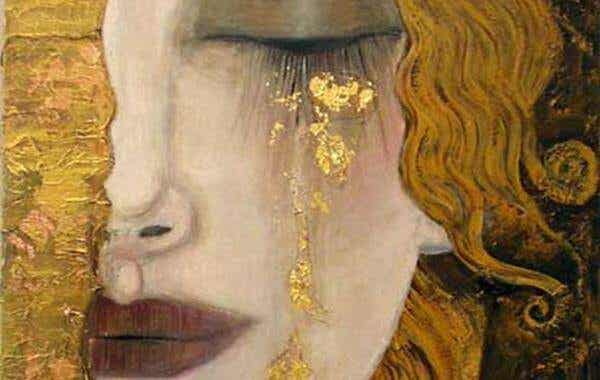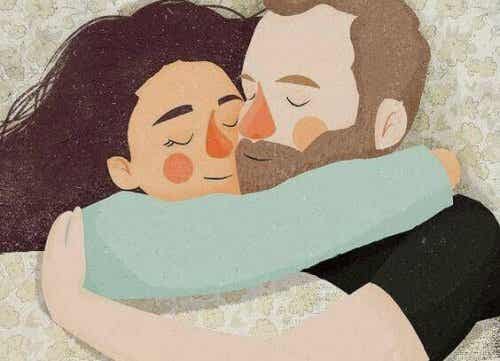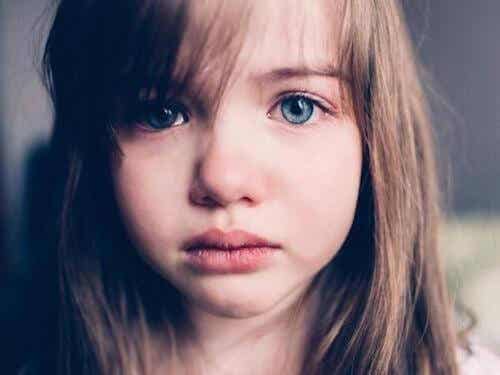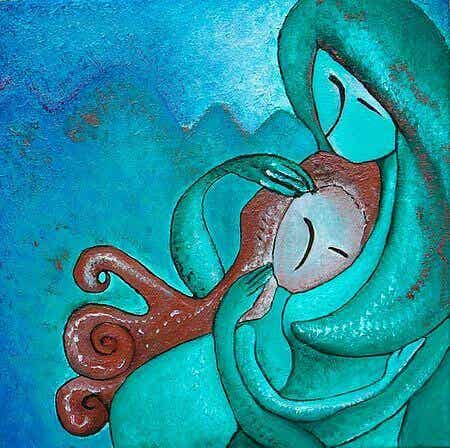
Last update: 14 September, 2016
Tears have an important biological function: they clean our eyes. They allow us to have clearer eyesight and take care of oxygenating the cornea. They also act as a natural lubricant and contain antibacterial substances that protect us from infections.
However, tears also function as indicators of the wounds present in our body. They activate some mechanisms that push the cells specialized in the defense and healing processes to go to the damaged area, to be able to repair it: this means that they have a direct relationship with our immune system.
"If, in any situation, life has inflicted wounds on you, wait for them to heal and do not reopen them ..."
-Alessandro Mazariegos-
Yet, tears do not only have a physiological action. Most of us, in fact, see them as the manifestation of an emotional aspect. We cry when we are very sad, when we have great fear or for the greatest joy. We cry, because we feel emotions.
Tears sometimes make the rain disappear
Crying is a subjective manifestation that has, on the one hand, a communicative function: that of explaining to others how we feel, trying to awaken in them a feeling of solidarity. On the other hand, however, tears also have a therapeutic purpose, because they allow us to release the tension accumulated over time.
Crying is an emotional medium that can have various causes. The action of crying overcomes our need for control and, therefore, as much as we would like to avoid it, sometimes we end up crying anyway. Crying indicates a lack of control, but at the same time, it breaks a barrier of expression.
This happens because in our brain there are two different areas: a prefrontal area that deals with executive matters, such as reasoning and decision making, and where the will is located; another area has the purpose of activating reflexes, which are in fact automatic and involuntary. Emotions arise in the latter area, which is also the most primitive area of our brain.
What science says about crying
We can cry because we have cut an onion, which simply represents the fact that our sense of smell, connected to our tear glands, works normally. However, you can also cry in specific situations where crying reflects an illness. In these cases, this reaction is known as "pathological crying".
Several scientific researches have shown that, when we cry, we release various substances such as endorphins, corticotropin, prolactin and magnesium and potassium salts, which are responsible for high levels of anxiety and excitement in our body. After that, you immediately feel a feeling of peace and tranquility. On top of that, when we cry, tears act as a pain reliever that reduces pain.
Crying is triggered by negative and very intense moods like tension, anger, anxiety, but also from equally strong positive emotions, how great joy can be. In all cases, one experiences the feeling of finding oneself in front of a very big thing.
Is it good to suppress crying?
Repressing tears is bad for your health. In most cultures there is no positive idea of a man crying, because it is considered a gesture of weakness. As a result, men in particular tend to stifle their emotions, unlike women who, on the other hand, are often associated with easy tears.
The origin of this stereotype goes back to wrong educational models based on male "criteria". Holding back tears increases frustration and aggression and causes blockages.
Faced with the loss, for example, of a loved one, a deep sadness arises: a painful process during which the best help is crying. It is part of life. When one does not live and represses, various negative consequences arise, such as the appearance of diseases, as a somatization process is activated due to the repression of emotional pain. So, crying is good when it is proportional to the reason that triggers it.
On the contrary, instead, crying is harmful when the causes that trigger it are unknown and it is accompanied by lack of sleep or appetite, weight loss, lack of motivation and even a death wish. In these situations, now out of control, crying can indicate the presence of emotional disturbances to which particular attention must be paid, as it requires professional care.
Additional aspects to consider
Even if the physiological processes that intervene on the mechanism of crying and on the psychological elements that are part of it are known, there are still unknown aspects that, even today, continue to be a mystery. Crying would seem to be a human-only trait, as no other species mourns their emotions.
Some theories argue that the most basic crying is the result of physical pain, while the more complex ones claim that it is the evolutionary result of a type of non-verbal communication that aims to get help from others. This can be seen, for example, in the crying of babies who seek the attention of their mother.
In any case, you know that crying, under normal conditions, is a liberating act. And it really is, because it allows you to express feelings and emotions that go beyond words. There are forms of pain that do not allow speeches, but require a physical gesture. That gesture is crying: a bodily action which, when spontaneous, leads to a state of peace.
We think you may also be interested in:


























